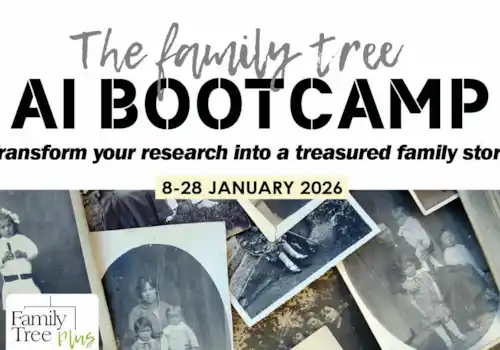Start your family tree today with our expert advice on things you'll need to get going
Need help shopping around for family tree essentials? You can begin very easily by drawing up a family tree and recording details of your ancestors over the centuries. This essentials guide shows you the inexpensive kit that will help you get started.
1. Family tree blank charts
A family tree chart is a great, visual way of presenting your family tree as it grows, starting from yourself. There are lots of different versions available, ranging from simple two or three-generation charts, through to eight or more generations, depending on how much information you’d like to display.
There are two main types of layout: a traditional chart and a fan type. The former has a space for your details at either the top or bottom of the chart (as the first generation), with your parents, grandparents and so on appearing in boxes either above or below your box; the latter has your details in the centre, with boxes for parents, grandparents etc spreading outwards into either a circle or fan-shape.
Our top tip? Write in pencil until you’re very sure of your facts! It’s all too easy to get mixed up when entering the dates of more than one ancestor and before you know it you’ve spoiled your lovely chart…
2. Acid-free materials
Once you start researching your family history you’ll start to hear the words ‘acid-free’ and ‘archive quality’ a lot. These phrases simply mean that you should ideally use paper products that are acid-free, to prolong the life of your paper-based research such as charts, record sheets and certificates.
Archive quality materials may cost a little more than their non-archive counterparts, but they are the same as those used by professional archivists and so are worth the investment for your precious research. Acid-free materials will stand the test of time, meaning that you can pass your family history on to future generations.
3. Pens and Pencils
You can also buy archive quality pens and inks that are guaranteed not to fade (or to fade at a slower rate) than the non-archive versions. When you visit a library or archive you’ll be asked to take in pencils rather than pens, to avoid damaging precious documents, so a pack of pencils can be a great investment and can also be used for the draft version of your family tree chart.
4. Keeping a record
One of the joys of family history is that there’s always something new to discover, however the flip side is that the paper trail will start to grow quickly as you accumulate new facts and documents. Stay organised from the start and save time by recording your searches as you go. You can buy record sheets and folders (acid-free of course!) on which you can record all the facts about each ancestor and then file these into family groups.
5. Files and folders
Stay on track with your research by creating files or folders for each family group (ie surname). You can buy acid-free versions of most of the popular file types such as wallets, filing pockets, expanding wallets, hanging files and tabbed folders.
Many people like to use a colour-coding system to identify family groups at a glance. For example, you could choose green for your father’s grandfather and his ancestors, orange for your father’s grandmother and her ancestors, red and purple for your mother’s grandfather and grandmother respectively. There are no hard and fast rules, just what works well for you.
Disclaimer: Sometimes we may include links to online retailers, from which we might receive a commission if you make a purchase. Affiliate links do not influence editorial coverage and will only be used when covering relevant products.








